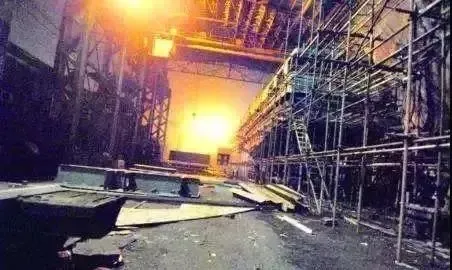Fire caused by welding environment not meeting requirements
The harrowing incident at the shipyard, centered around the welding activities of an employee named Gu, underlines the devastating consequences of neglecting fire safety protocols. The incident began when Gu, a welder, sought a fire permit from the onboard firefighters, a standard procedure intended to ensure a safe working environment. However, in an egregious lapse in judgment, the firefighters granted the permit without conducting an on-site inspection. Consequently, Gu proceeded with his task of cutting a wire using gas-operated equipment. Unbeknownst to him, the hull's underside was tainted with oil, an easily ignitable substance that lay undetected due to the lack of initial inspection.
As the sparks flew from Gu’s gas cutter, the oil quickly caught fire, setting off an uncontrollable blaze that spread rapidly across the ship’s lower deck. The scene, engulfed in flames, turned chaotic as the onsite personnel struggled to control the fire. Their efforts — utilizing water and fire extinguishers — proved futile against the ferocious inferno, tragically culminating in the loss of five lives, with one individual sustaining severe injuries and three others suffering minor burns and trauma. The horrendous outcome stemmed from a cascade of preventable errors, chiefly the preliminary approval of the fire permit without proper scrutiny, the unnoticed presence of oil in the working vicinity, and the evident lack of adequate firefighting training among the crew present at the time.

Preventing such a disaster calls for a stringent adherence to safety regulations and a thorough, multi-faceted approach to fire risk management. Firstly, it’s imperative that firefighters and safety officers rigorously inspect any fire permit application areas before granting approval. This protocol ensures that any potential hazards, such as the presence of flammable materials, are identified and mitigated beforehand. Secondly, maintaining a rigorous check to ascertain and eliminate any oil or other flammable substances in the designated hot work zone is crucial. This step could avert the risk of the entire working area becoming a tinderbox during welding operations. Thirdly, comprehensive fire safety training for all personnel is non-negotiable. Ensuring that staff members are well-versed in both preventive measures and emergency response tactics can make the difference between containment and catastrophe.
Incorporating regular drills, detailed safety briefings before undertaking hazardous tasks, and a culture of vigilance can foster a safer work environment. This multi-layered strategy endeavors not only to comply with standard safety protocols but also to imbue a proactive approach to potential risks. Meaningful engagement between welders, safety inspectors, and emergency personnel fortifies a collaborative stance against accidents.
Moreover, leveraging technology, such as installing early detection systems and using fire retardant materials in construction zones, further insulates the site from potential threats. Ensuring meticulous documentation and adherence to fire safety measures, embracing new safety technologies, and fostering an environment that prioritizes and rewards safety diligence are paramount. By adopting these preventive strategies, we fortify a framework that not only mitigates risk but also safeguards lives, cementing a culture of safety that values thoroughness and precaution above expedience and oversight.
-
Only welders are allowed to perform welding workYangiliklarOct.31,2025
-
Health hazards of plasma weldingYangiliklarOct.23,2025
-
Pay attention to safety when weldingYangiliklarOct.20,2025
-
Burned while exploring the welding environmentYangiliklarSep.30,2025
-
Scalded by molten steel when exploring the depth of the slag poolYangiliklarSep.23,2025
-
Fire during welding workYangiliklarSep.16,2025


